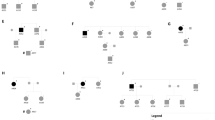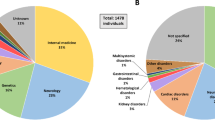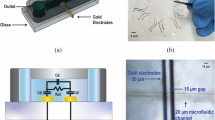Abstract
Transthyretin amyloidosis (ATTR amyloidosis) is a rare disease characterised by extracellular deposition of amyloid fibrils composed by transthyretin. ATTR amyloidosis can be sub-classified as wild-type ATTR (ATTR-wt) or as hereditary amyloidosis (ATTR-m); the prevalence of both types are likely underestimated. There are tools that can help us to study ATTR-m, as gnomAD database. Our primary aim was to estimate prevalence of variants, especially amyloidogenic variants, in the TTR gene using gnomAD database. We analysed TTR missense variants found in gnomAD. The variables studied were classified according to their clinical significance and according to the different populations. We found 71 missense variants in the TTR gene. Eleven variants were described as affects function variants (prevalence 1:230). The most frequently detected variant were c.424G>A (p.(Val142Ile)) (prevalence 1:332, MAF 0.00151) and c.148G>A (p.(Val50Met)) (prevalence 1:4924, MAF 0.000102), which represented 88% and 5%, respectively, of all affects function variants detected. Seventeen variants were classified as probably affects function, 29 as unknown variants, 4 as probably does not affect function and 10 as does not affect function variants. In terms of different populations, c.424G>A (p.(Val142Ile)) was especially prevalent in African population (MAF 0.01602; prevalence of 1:31) and c.148G>A (p.(Val50Met)) in European population (MAF 0.000179; prevalence of 1:2792). Prevalence of amyloidogenic variants in the general population was higher than prevalence heretofore described. This difference could be explained by incomplete penetrance of the disease, but other factors contributing to this fact, fundamentally the underdiagnosis of the disease.
Similar content being viewed by others
Log in or create a free account to read this content
Gain free access to this article, as well as selected content from this journal and more on nature.com
or
References
Wechalekar AD, Gillmore JD, Hawkins PN. Systemic amyloidosis. Lancet. 2016;387:2641–54.
Sipe JD, Benson MD, Buxbaum JN, Ikeda S, Merlini G, Saraiva MJM, et al. Amyloid fibril proteins and amyloidosis: chemical identification and clinical classification International Society of Amyloidosis 2016 Nomenclature Guidelines. Amyloid. 2016;23:209–13.
Gertz MA, Benson MD, Dyck PJ, Grogan M, Coelho T, Cruz M, et al. Diagnosis, prognosis, and therapy of transthyretin amyloidosis. J Am Coll Cardiol. 2015;66:2451–66.
Sekijima Y. Transthyretin (ATTR) amyloidosis: clinical spectrum, molecular pathogenesis and disease-modifying treatments. J Neurol Neurosurg Psychiatry. 2015;86:1036–43.
Ando Y, Coelho T, Berk JL, Cruz MW, Ericzon B, Ikeda S, et al. Guideline of transthyretin-related hereditary amyloidosis for clinicians. Orphanet J Rare Dis. 2013;8:31.
Mutations in Hereditary Amyloidosis [Internet]. Available from http://www.amyloidosismutations.com/
Galant NJ, Westermark P, Higaki JN, Chakrabartty A. Transthyretin amyloidosis: an under-recognized neuropathy and cardiomyopathy. Clin Sci. 2017;131:395–409.
Coelho T, Maurer MS, Suhr OB. THAOS – The Transthyretin Amyloidosis Outcomes Survey: initial report on clinical manifestations in patients with hereditary and wild-type transthyretin amyloidosis. Curr Med Res Opin. 2013;29:63–76.
Hawkins PN, Ando Y, Dispenzeri A, Gonzalez-Duarte A, Adams D, Suhr OB. Evolving landscape in the management of transthyretin amyloidosis. Ann Med. 2015;47:625–38.
Parman Y, Adams D, Obici L, Galán L, Guergueltcheva V, Suhr OB, et al. Sixty years of transthyretin familial amyloid polyneuropathy (TTR-FAP) in Europe: where are we now? A European network approach to defining the epidemiology and management patterns for TTR-FAP. Curr Opin Neurol. 2016;29(Suppl 1):S3–S13.
Reinés JB, Vera TR, Martín UM, Serra HA, Millán JMD, Lezaun CG, et al. Epidemiology of transthyretin-associated familial amyloid polyneuropathy in the Majorcan area: Son Llàtzer Hospital descriptive study. Orphanet J Rare Dis. 2014;9:29.
Obici L, Kuks JB, Buades J, Adams D, Suhr OB, Coelho T, et al. Recommendations for presymptomatic genetic testing and management of individuals at risk for hereditary transthyretin amyloidosis. Curr Opin Neurol. 2016;29(Suppl 1):S27.
Conceição I, González-Duarte A, Obici L, Schmidt HHJ, Simoneau D, Ong ML, et al. Red-flag symptom clusters in transthyretin familial amyloid polyneuropathy. J Peripher Nerv Syst. 2016;21:5–9.
Hellman U, Alarcon F, Lundgren H-E, Suhr OB, Bonaiti-Pellié C, Planté- Bordeneuve V. Heterogeneity of penetrance in familial amyloid polyneuropathy, ATTR Val30Met, in the Swedish population. Amyloid. 2008;15:181–6.
Lemos C, Coelho T, Alves-Ferreira M, Martins-da-Silva, A, Sequeiros, J, Mendonça, D, et al. Overcoming artefact: anticipation in 284 Portuguese kindreds with familial amyloid polyneuropathy (FAP) ATTRV30M. J Neurol Neurosurg Psychiatry. 2014;85:326–30.
Molina OG, Judge D, Campbell W, Chahal H, Mugmon M. Transthyretin cardiac amyloidosis: an under-diagnosed cause of heart failure. J Community Hosp Intern Med Perspect. 2014;4:25500.
Schmidt HH, Waddington-Cruz M, Botteman MF, Carter JA, Chopra AS, Hopps M, et al. Estimating the global prevalence of transthyretin familial amyloid polyneuropathy. Muscle Nerve. 2018;57:829–37.
Damy T, Costes B, Hagège AA, Donal E, Eicher JC, Slama M, et al. Prevalence and clinical phenotype of hereditary transthyretin amyloid cardiomyopathy in patients with increased left ventricular wall thickness. Eur Heart J. 2015;37:1826–34.
Lek, M, Karczewski, K, Minikel EV, Samocha KE, Banks E, Fennell T, et al. Analysis of protein-coding genetic variation in 60,706 humans. Nature. 2016;536:285–91.
Human Genome Variation Society. [Internet]. Available from http://varnomen.hgvs.org
Richards S, Aziz N, Bale S, Bick D, Das S, Gastier-Foster J, et al. Standards and guidelines for the interpretation of sequence variants: A joint consensus recommendation of the American College of Medical Genetics and Genomics and the Association for Molecular Pathology. Genet Med. 2015;17:405–24.
Lachmann HJ, Booth DR, Booth SE, Bybee A, Gilbertson JA, Gillmore JD, et al. Misdiagnosis of hereditary amyloidosis as AL (primary) amyloidosis. N Engl J Med. 2002;346:1786–91.
Maurer MS, Hanna M, Grogan M, Dispenzieri A, Witteles R, Drachman B, et al. Genotype and phenotype of transthyretin cardiac amyloidosis in the United States: THAOS (The Transthyretin Amyloid Outcome Survey). J Am Coll Cardiol. 2016;68:161–72.
Jacobson DR, Pastore R, Pool S, Malendowicz S, Kane I, Shivji A, et al. Revised transthyretin Ile 122 allele frequency in African-Americans. Hum Genet. 1996;98:236–8.
Jacobson DR, Alexander AA, Tagoe C, Buxbaum JN. Prevalence of the amyloidogenic transthyretin (TTR) V122I allele in 14 333 African-Americans. Amyloid. 2015;22:171–4.
Buxbaum J, Alexander A, Koziol J, Tagoe C, Fox E, Kitzman D. Significance of the amyloidogenic transthyretin Val 122 Ile allele in African Americans in the Arteriosclerosis Risk in Communities (ARIC) and Cardiovascular Health (CHS) Studies. Am Heart J. 2010;159:864–70.
Jacobson DR, Alexander AA, Tagoe C, Garvey WT, Williams SM, Tishkoff S, et al. The prevalence and distribution of the amyloidogenic transthyretin (TTR) V122I allele in Africa. Mol Genet Genom Med. 2016;4:548–56.
Dungu JN, Papadopoulou SA, Wykes K, Mahmood I, Marshall J, Valencia O, et al. Afro-Caribbean Heart Failure in the United Kingdom: cause, outcomes, and ATTR V122I cardiac amyloidosis. Circ Hear Fail. 2016;9:e003352.
Yamashita T, Asl KH, Yazaki M, Benson MD. A prospective evaluation of the transthyretin Ile122 allele frequency in an African-American population. Amyloid. 2005;12:127–30.
Reddi H V., Jenkins S, Theis J, Thomas BC, Connors LH, Van Rhee F, et al. Homozygosity for the V122I mutation in transthyretin is associated with earlier onset of cardiac amyloidosis in the African American population in the seventh decade of life. J Mol Diagn. 2014;16:68–74.
Gillmore JD, Booth DR, Pepys MB, Hawkins PN. Hereditary cardiac amyloidosis associated with the transthyretin Ile122 mutation in a white man. Heart. 1999;82:e2–e2.
Cappelli F, Frusconi S, Bergesio F, Grifoni E, Fabbri A, Giuliani C, et al. The Val142Ile transthyretin cardiac amyloidosis: Not only an Afro-American pathogenic variant? A single-centre Italian experience. J Cardiovasc Med. 2016;17:122–5.
Asl KH, Nakamura M, Yamashita T, Benson MD. Cardiac arnyloidosis associated with the transthyretin Ile122 mutation in a Caucasian family. Amyloid. 2001;8:263–9.
Nienhuis HL, Bijzet J, Hazenberg BP. The prevalence and management of systemic amyloidosis in Western countries. Kidney Dis. 2016;2:10–19.
Plante-Bordeneuve V. Transthyretin familial amyloid polyneuropathy: an update. J Neurol. 2018;265:976–83.
Rapezzi C, Quarta CC, Obici L, Perfetto F, Longhi S, Salvi F, et al. Disease profile and differential diagnosis of hereditary transthyretin-related amyloidosis with exclusively cardiac phenotype: an Italian perspective. Eur Heart J. 2012;34:520–8.
Damy T, Judge DP, Kristen AV, Berthet K, Li H, Aarts J. Cardiac findings and events observed in an open-label clinical trial of tafamidis in patients with non-Val30Met and non-Val122Ile hereditary transthyretin amyloidosis. J Cardiovasc Transl Res. 2015;8:117–27.
Wixner J, Mundayat R, Karayal ON, Anan I, Karling P, Suhr OB. THAOS: gastrointestinal manifestations of transthyretin amyloidosis - common complications of a rare disease. Orphanet J Rare Dis. 2014;9:61
Reilly MM, Staunton H, Harding AE. Familial amyloid polyneuropathy (TTRala60) in north west Ireland: a clinical, genetic, and epidemiological study. J Neurol Neurosurg Psychiatry. 1995;59:45–9.
Meng LC, Lyu H, Zhang W, Liu J, Wang ZX, Yuan Y. Hereditary transthyretin amyloidosis in eight Chinese families. Chin Med J. 2015;128:2902.
Hughes BG, Harrison PM, Hekimi S. Estimating the occurrence of primary ubiquinone deficiency by analysis of large-scale sequencing data. Sci Rep. 2017;7:17744.
Song W, Gardner SA, Hovhannisyan H, Natalizio A, Weymouth KS, Chen W, et al. Exploring the landscape of pathogenic genetic variation in the ExAC population database: insights of relevance to variant classification. Genet Med. 2016;18:850–4.
Nicolas G, Charbonnier C, Campion D, Veltman JA. Estimation of minimal disease prevalence from population genomic data: application to primary familial brain calcification. Am J Med Genet Part B. 2018;177:68–74.
Author information
Authors and Affiliations
Corresponding author
Ethics declarations
Conflict of interest
The authors declare that they have no conflict of interest.
Additional information
Publisher’s note: Springer Nature remains neutral with regard to jurisdictional claims in published maps and institutional affiliations.
Rights and permissions
About this article
Cite this article
Lahuerta Pueyo, C., Aibar Arregui, M., Gracia Gutierrez, A. et al. Estimating the prevalence of allelic variants in the transthyretin gene by analysing large-scale sequencing data. Eur J Hum Genet 27, 783–791 (2019). https://doi.org/10.1038/s41431-019-0337-1
Received:
Revised:
Accepted:
Published:
Issue date:
DOI: https://doi.org/10.1038/s41431-019-0337-1
This article is cited by
-
Detection and Diagnosis of Cardiac Amyloidosis in Egypt
Cardiology and Therapy (2023)
-
Elderly patients with suspected Charcot-Marie-Tooth disease should be tested for the TTR gene for effective treatments
Journal of Human Genetics (2022)
-
Clinical and Genetic Evaluation of People with or at Risk of Hereditary ATTR Amyloidosis: An Expert Opinion and Consensus on Best Practice in Ireland and the UK
Advances in Therapy (2022)
-
Established and candidate transthyretin amyloidosis variants identified in the Saudi population by data mining
Human Genomics (2021)



